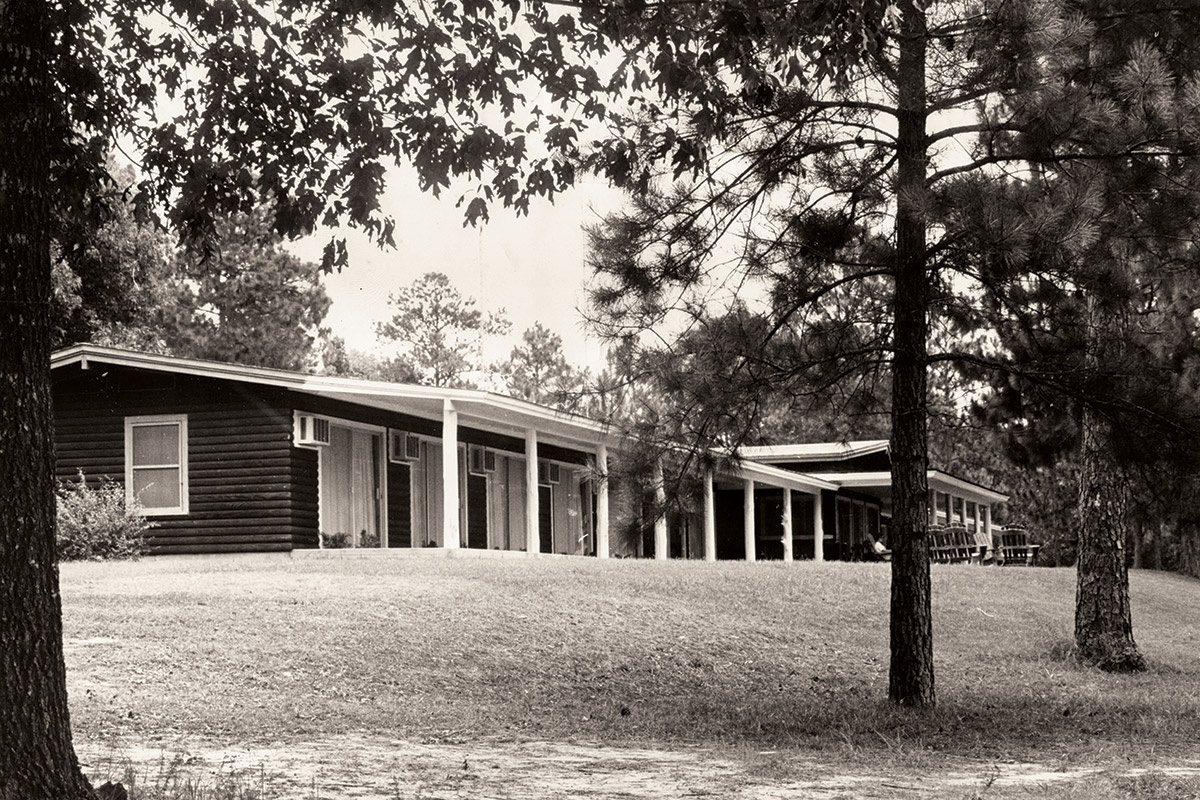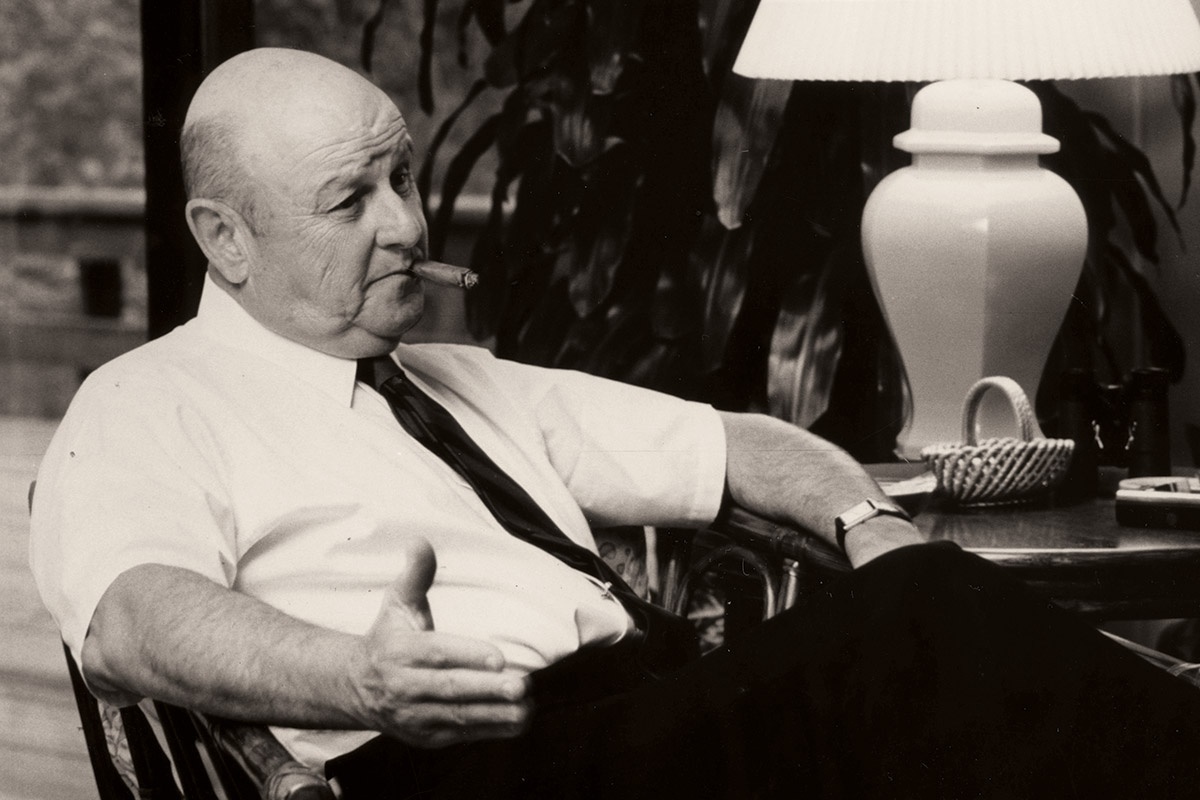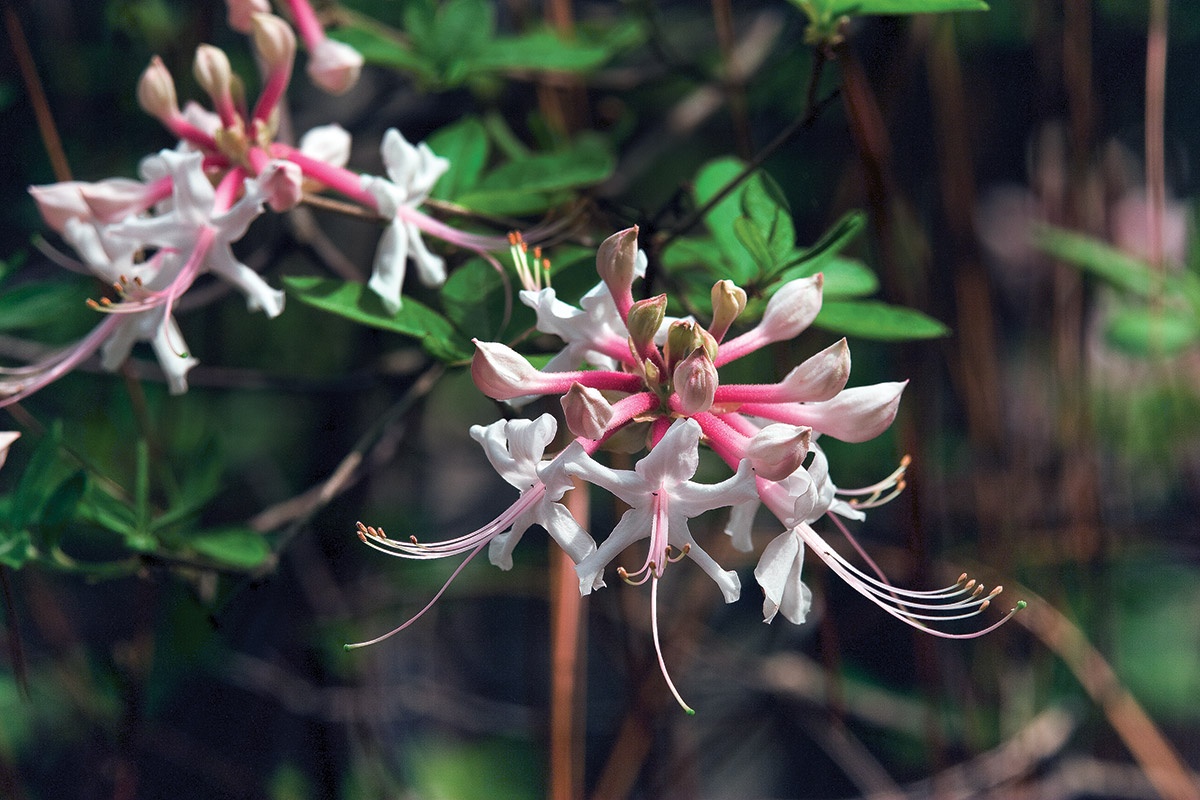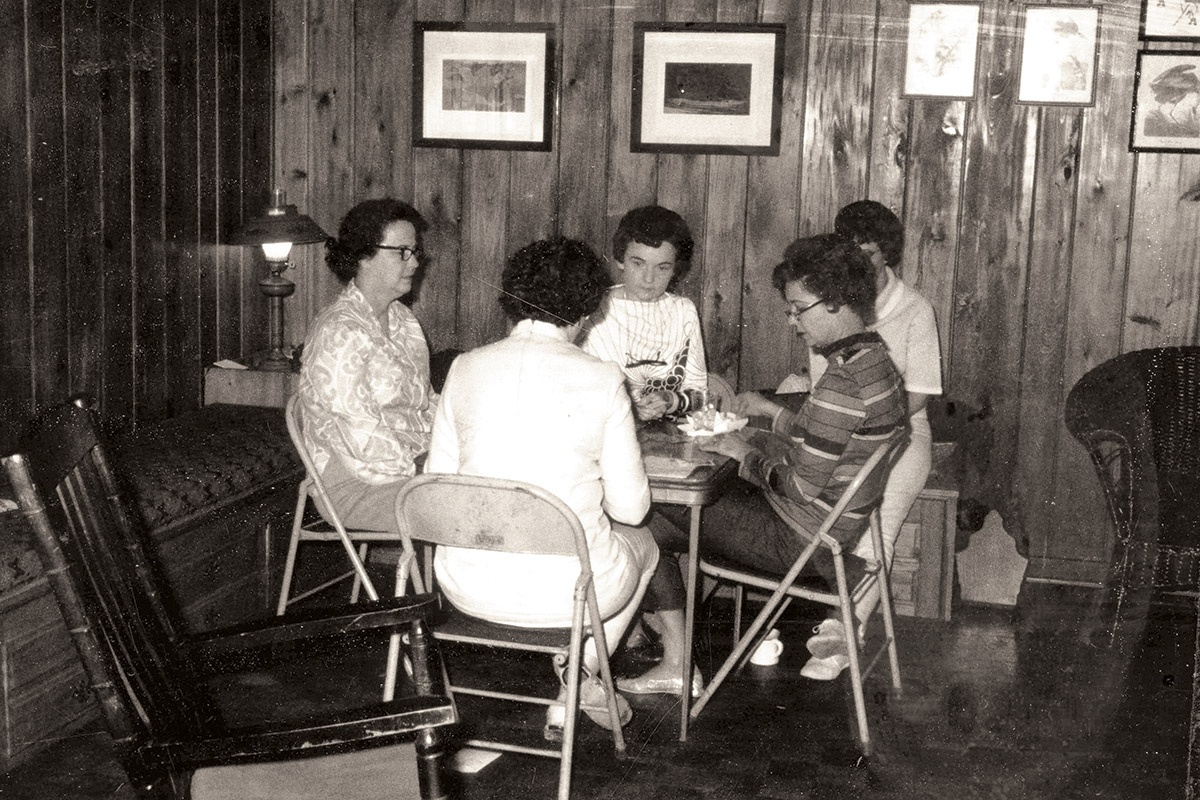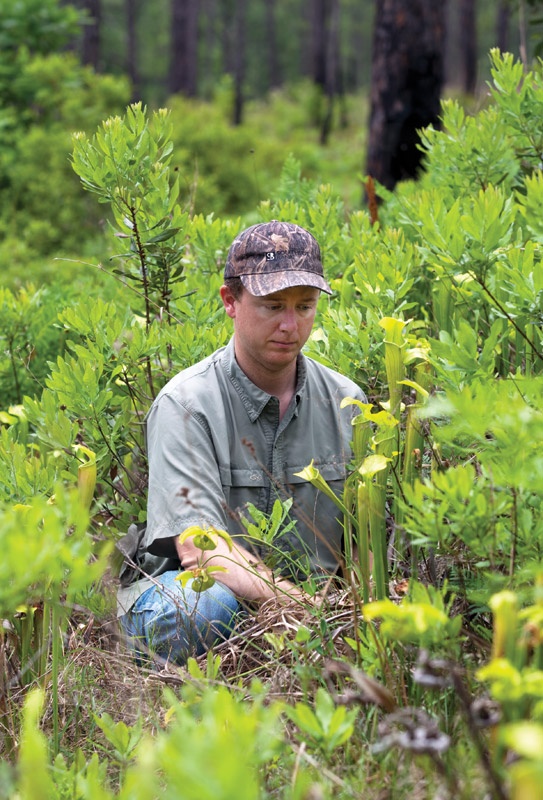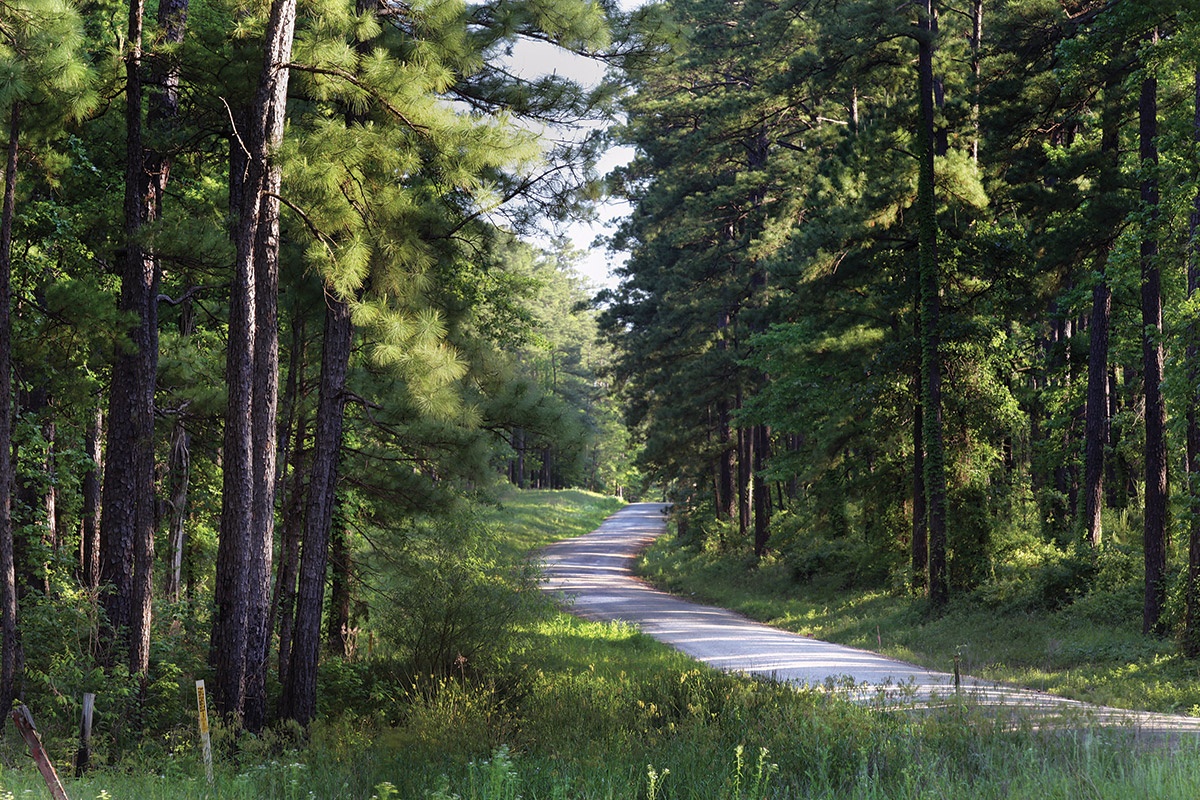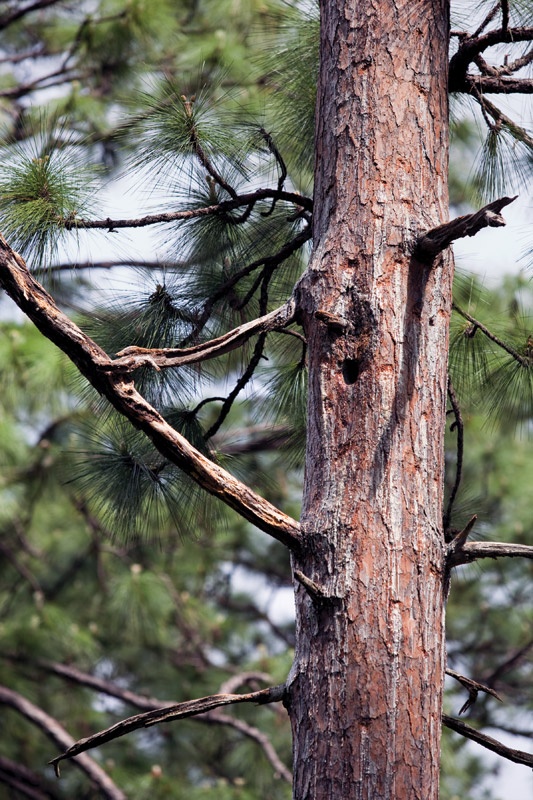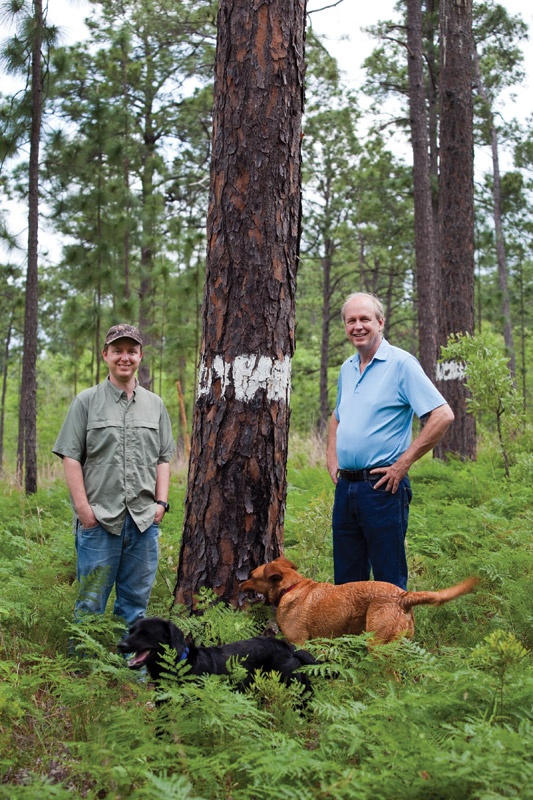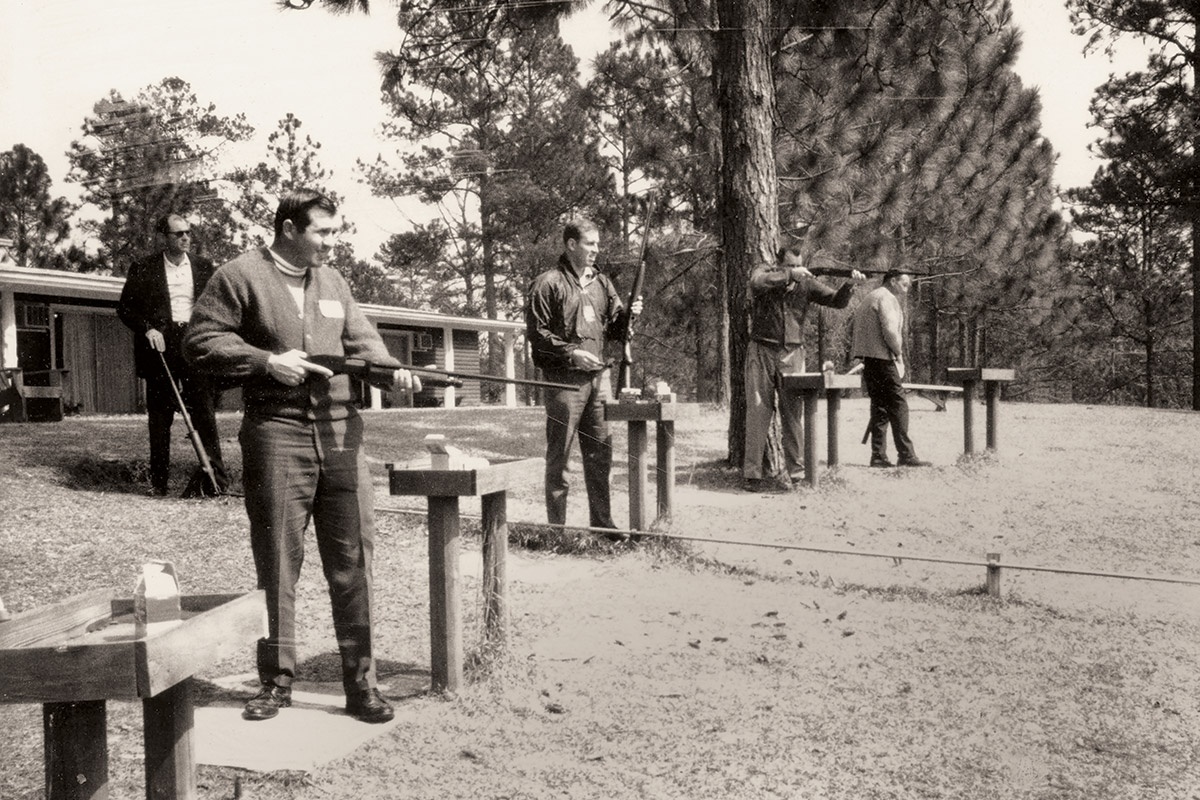Sandwiched between Sam Rayburn and Toledo Bend reservoirs lies a long east-west highland known as Longleaf Ridge. It’s sort of a Deep East Texas version of the Continental Divide. Dozens of creeks and spring-fed streams drop south into the Sabine River bottom. Others flow north into an area that for more than a century has been known as Scrappin’ Valley.
Spanning thousands of acres where Newton and Sabine counties meet, the valley is big timber country. Here, lumberman Arthur Temple Jr. built a corporate retreat—Scrappin’ Valley Lodge—in the 1950s. It’s also where Temple and others set out to protect the endangered red-cockaded woodpecker and the longleaf pine habitat it requires. But Scrappin’ Valley also boasts a history that’s colorful enough to read like a Hollywood script.
Backwoods Scraps
Native American groups lived and traveled across these ridges and valleys for generations. They occasionally burned the woods—dominated throughout most of history by fire-resistant longleaf pines—to encourage grassy forest floors where deer, turkeys and other game could flourish. By the mid-19th century, these forests became the backwoods homes of settlers with names such as Weeks, Conner, Lowe, Ferguson and Smith. It remained an isolated deep-woods sanctuary where independent-minded families could survive off the land and go by the code of “live and let live.”
The code occasionally broke down, leading to scraps between close-knit families. The area’s most famous feud turned violent after a dispute escalated over free-ranging hogs, says Weldon McDaniel, chair of the Sabine County Historical Commission.
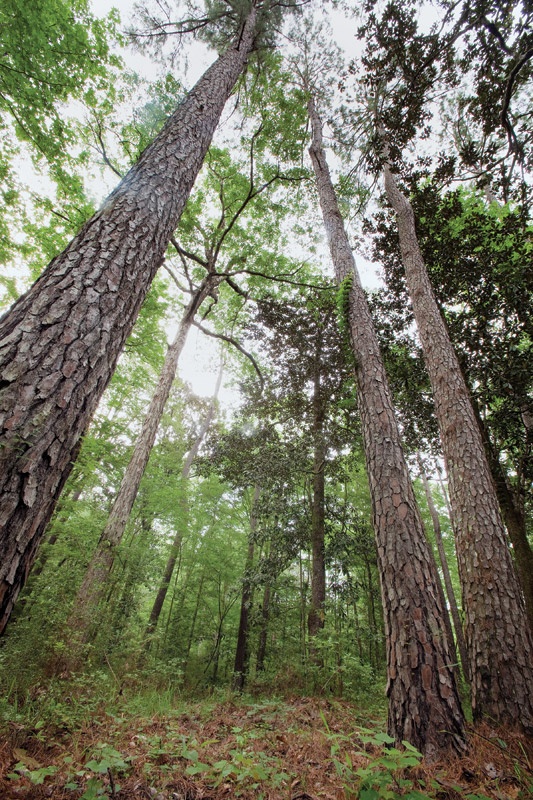
Scrappin’ Valley property of Rufus Duncan and family features soaring pines and magnolia, bay and white oak trees.
The Hemphill resident should know. His great-grand uncle, William “Kit” Smith, was the first person killed in what’s remembered today as the Smith-Lowe-Conner feud. Smith was murdered along with Eli Lowe, both purportedly shot by the Conner clan in 1883, southeast of Hemphill at a site now under Toledo Bend Reservoir. Several Conners were convicted and jailed; some escaped, including the family patriarch, Willis Conner.
Local authorities couldn’t catch the Conners, whose backwoods savvy and sharpshooter skills kept them on the run and out of the local jail. The state sent in Texas Ranger Captain William Scott and Company “F.” A fiery battle ensued between the Conners and the Rangers in the spring of 1887. The battle left several Conners dead, along with Texas Ranger Private James Moore, whose tombstone still rests among wildflowers in the Hemphill Cemetery.
A posse of feuding families eventually caught the Conners, who lost seven family members in all. All of the Conners who served prison time were eventually given full pardons, explains McDaniel.
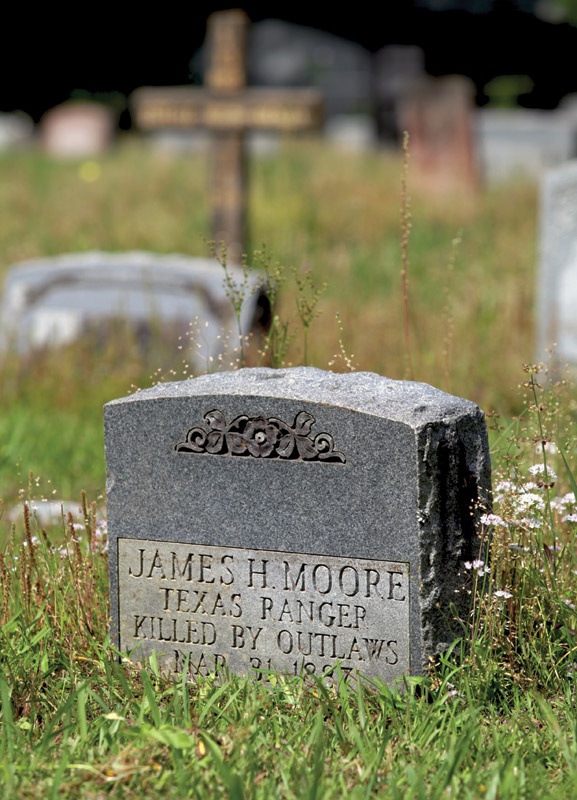
Scrappin’ Valley is famous for the Smith-Lowe-Conner feud of the 1880s, which the Texas Rangers tried unsuccessfully to end. A Ranger who was killed, Pvt. James H. Moore, was buried in Hemphill Cemetery.
The name Scrappin’ Valley reportedly didn’t come into use until years after the family feuds, sometime around 1900, and its origins are sketchy. Some say that a logging settlement in far northern Newton County (just south of today’s Sabine National Forest) got the name Scrappin’ Valley from the bootleggers and other lawbreakers who hid out in the pines. Another account claims that the name arose from a 1910 lovers’ quarrel at a church box supper when a disrespected young woman gave her boyfriend a memorable whipping.
Whatever the name’s origin, the remote region was home to vast logging operations. It also harbored moonshiners during Prohibition, when four people were murdered in a feud between rival distillers.
Hunts and ‘Wuffledust’
The name Scrappin’ Valley became the namesake of a hunting and fishing club started in the early 1950s by timber industry leader Arthur Temple Jr. According to historical records and interviews archived at the History Center in Diboll, Temple himself sketched out the lodge. The retreat was originally built for Temple Lumber Company employees and situated amid thousands of acres of pines.
The hilltop getaway consisted of a living room sandwiched between two wings of three bedrooms each, overlooking scenic Scrappin’ Valley Lake. By the time Temple Industries merged in 1973 with Time Inc., the lodge had become a conference center for hunting, fishing and weekend parties where company executives entertained clients, vendors and politicians. The facility was renovated in the mid-1970s, adding detached cottages (later duplexes) and a game room.
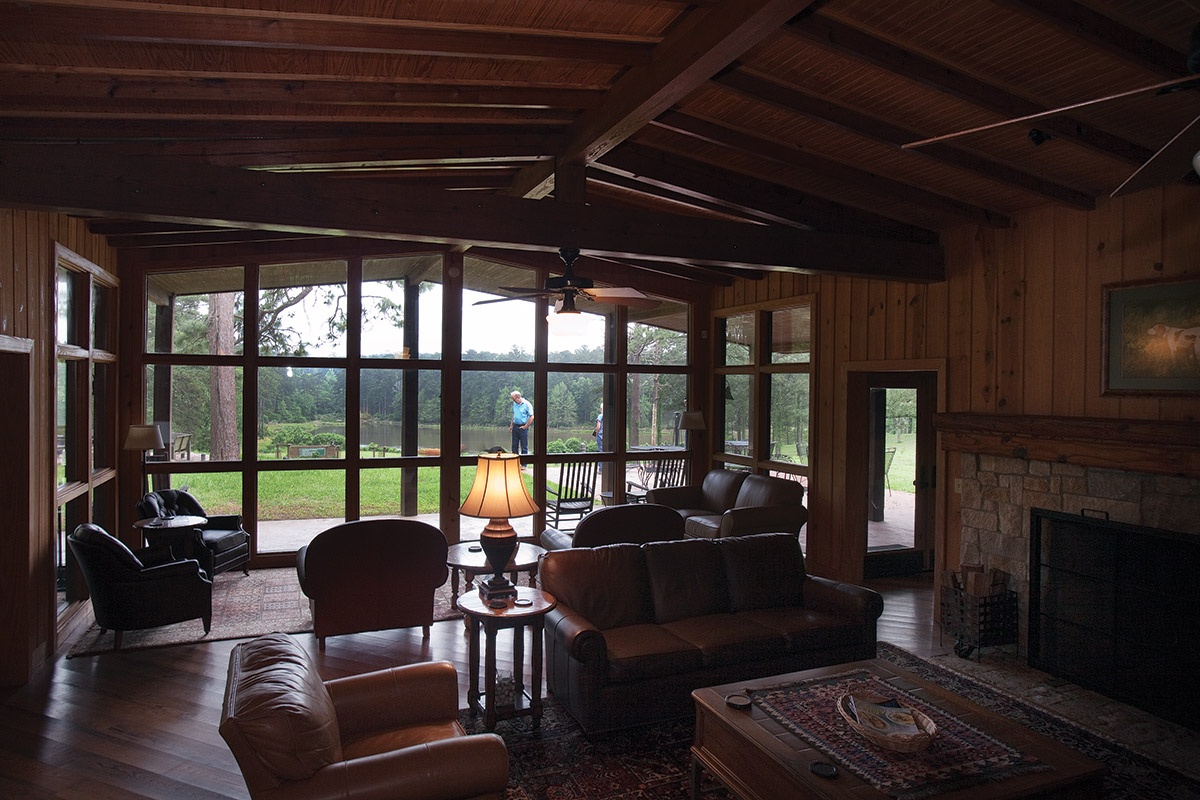
Scrappin’ Valley Lodge once welcomed timber company clients and politicians.
Time President Jim Shepley, an avid hunter, became a frequent visitor. He often arrived from New York in a private plane, landing at the company’s landing strip carved out of the woods nearby. Interviews of Scrappin’ Valley employees, conducted by the History Center, described a lively place filled with excitement. Longtime employee Jack Norman of Jasper recalled occasions when executives of Time and Look magazines, along with HBO and Sports Illustrated, arrived from New York City with advertising clients and notable entertainment and sports figures.
“They would look out across that lake and say, ‘Wow!’ ”
Norman recalled. “You never get tired of seeing people’s face light up.”
Norman’s favorite visitor was adventurous U.S. Rep. Charlie Wilson of Lufkin, who on at least one occasion arrived with an assault rifle given to him by an Afghan tribal leader.
Scrappin’ Valley Lodge guest books sport signatures of other notable guests—such as musicians Jerry Jeff Walker and Johnny Lee, in addition to politicians Sen. Gary Hart, Vice President Walter Mondale and former Texas Governor John Connally. The History Center’s interview with longtime Temple employee Joe Hamrick describes Scrappin’ Valley’s annual chili cook-off for company executives and Temple family friends.
“Arthur Temple Jr. would christen each chili pot with a pinch of sawdust he called ‘wuffledust’ from one of the company sawmills,” he explained.
A 1993 History Center interview with Temple, who died in 2006, added that Shepley wrote a script for a political musical to be performed at each cook-off. He added new lyrics to well-known songs and hired a piano player for accompaniment.
Cook-off participants performed the script dressed in theatrical costumes that Shepley had flown in from New York. Lady Bird Johnson and her aide, Liz Carpenter, attended the festive chili affair several years.
Native Protection
From early on, the Scrappin’ Valley Lodge and its surrounding forest served a purpose higher than entertaining the wealthy and prominent. Under Temple’s direction, it became an environmental laboratory, where researchers such as Texas Parks and Wildlife Department biologist Dan Lay learned how to nurture the area’s ecosystem, including longleaf pines and the red-cockaded woodpeckers that depend on them.
Unlike most woodpeckers, the red-cockaded drills its nest cavity in living pine trees aged 75 years or older. The woodpecker also requires open, parklike habitat resulting from frequent forest fires. Early 20th-century clear-cutting and ongoing suppression of forest fires brought about the decline of both longleaf pines and red-cockaded woodpeckers. Lay’s research conducted at Scrappin’ Valley helped convince federal authorities in 1970 to designate the woodpecker as an endangered species.
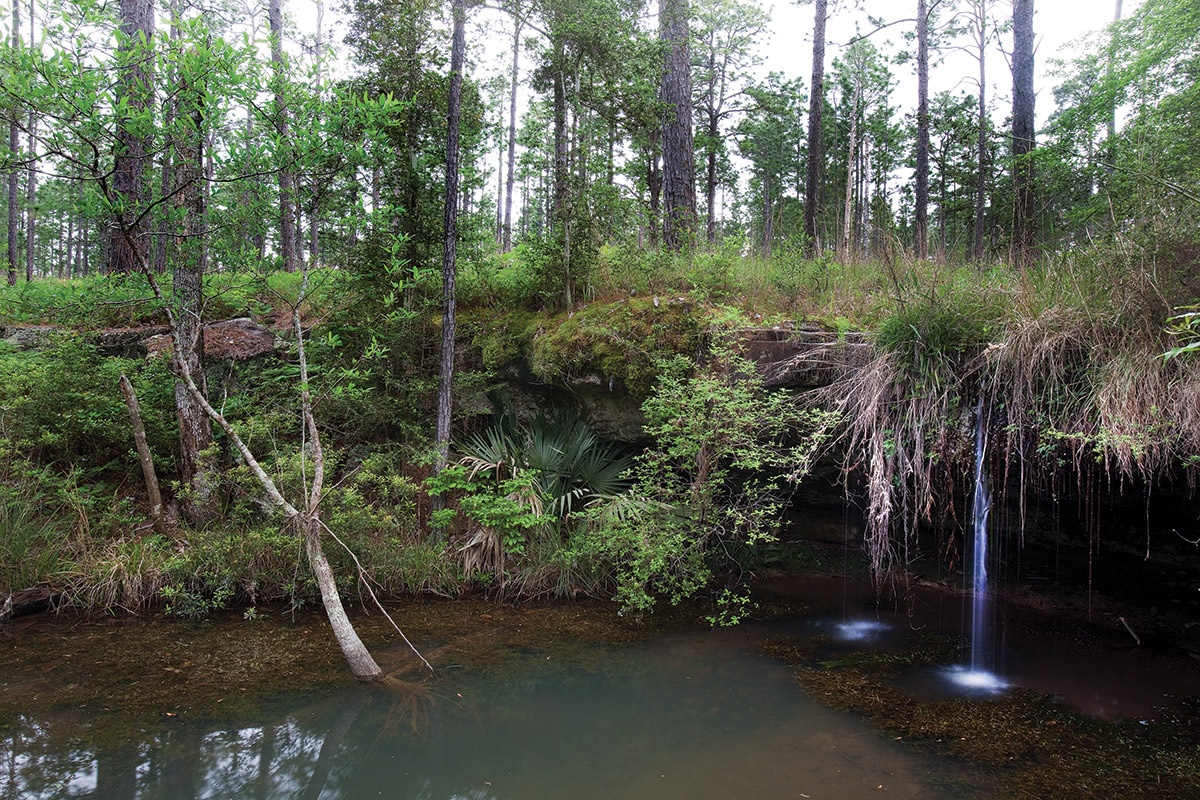
Duncan family property at Scrappin’ Valley features a dramatic waterfall at a spot called Dees Cave, where a family of pacifists purportedly hid from Confederate authorities during the Civil War.
Work continues today at Scrappin’ Valley to restore longleaf pines and protect the endangered red-cockaded woodpecker (see Longleaf Pines, Texas Co-op Power, July 2018, at SamHouston.net to learn more). The lodge and surrounding 11,213-acre property were sold in 2013 to Gillespie & Partners of Nacogdoches. Lloyd Gillespie expressed his commitment to the red-cockaded woodpecker program, which involves regular controlled burns of longleaf habitat.
Controlled burns and red-cockaded monitoring also continue on 1,885 acres that Rufus Duncan and family bought from Gillespie. The Duncans have built a deep-woods family retreat amid the longleaf pines, featuring wooden walls made from a half-dozen native species—from longleaf and cedar to catalpa and black walnut—cut on-site and milled nearby.
Like Native Americans before them, the Duncans burn the woods to encourage fire-resistant longleaf and to create a grassy forest floor that encourages wild turkey and deer populations. As CEO of Lufkin-based Higginbotham Brothers building supply stores, Duncan notes that he’s done his share of forest clear-cutting for wood products. But, he adds, “at the same time, we can save some of the special places, like Scrappin’ Valley, for the future.”
History and nature come together at one of the most picturesque places on the Duncans’ wooded acres. A spring-fed creek cascades 6 feet or more over a rock-lined ledge into a deep pool of clear water flanked by wild azaleas and palmettos. The spot is named Dees’ Cave, once situated near a wagon trail, the Hemphill-Newton Road. Now largely silted in, the grotto became a backwoods hideout for the Dees family, a group of pacifists who resisted the Confederacy during the Civil War. Lording over the historic and pastoral scene are 60- to 70-foot-high longleaf pines, some still slightly blackened from last year’s controlled burn.
Then as now, the spirits of Scrappin’ Valley carry on.
